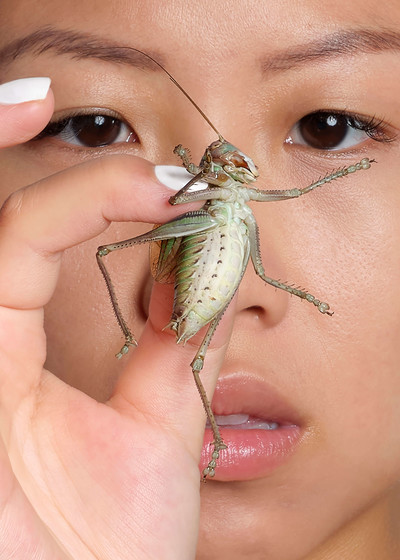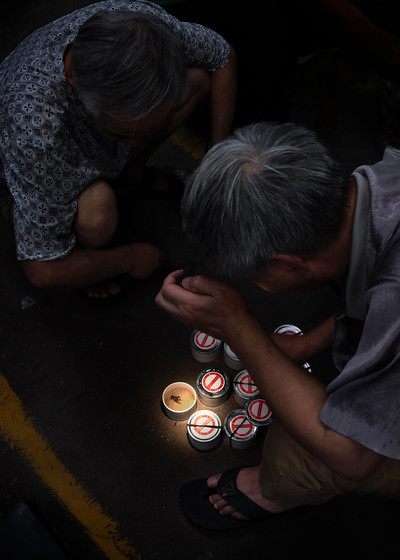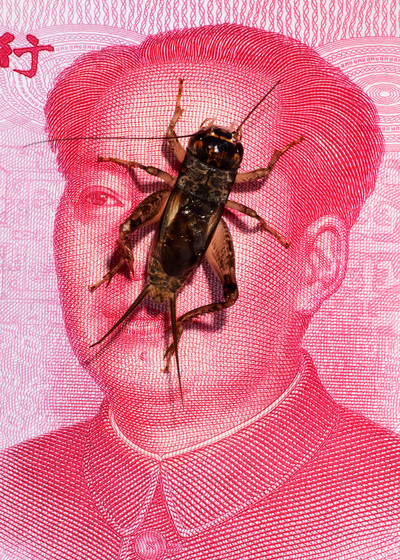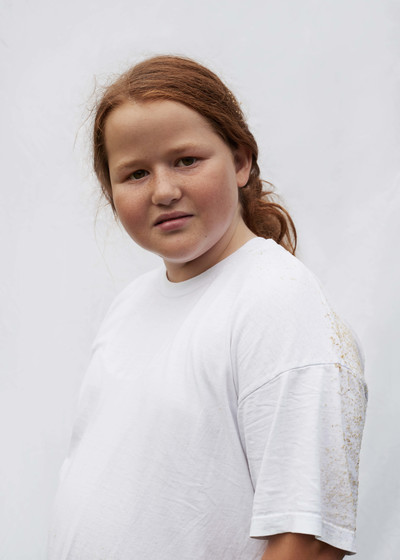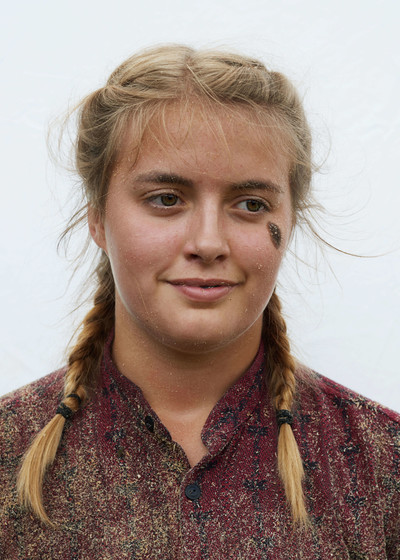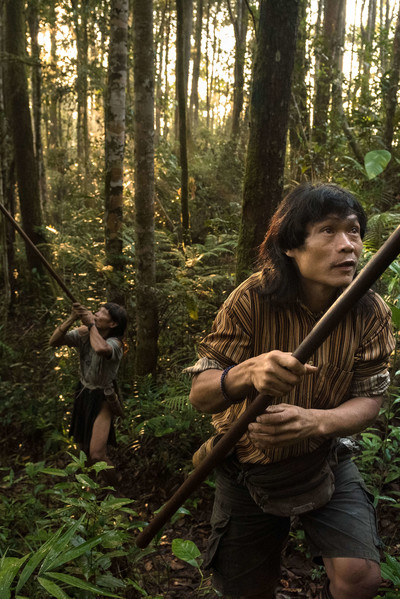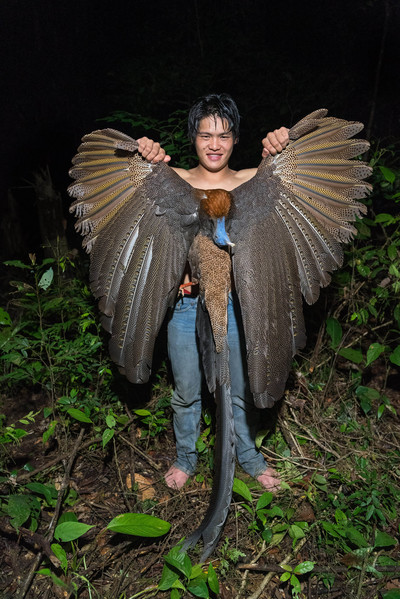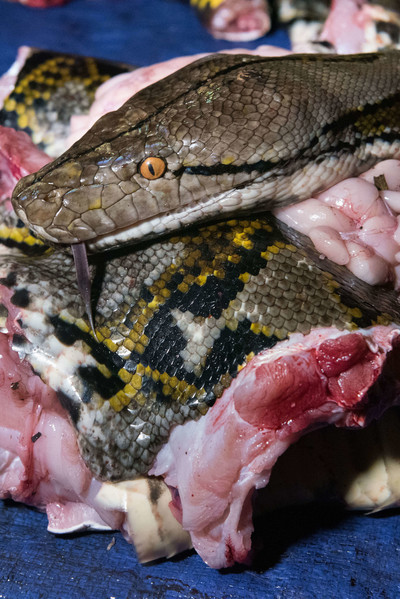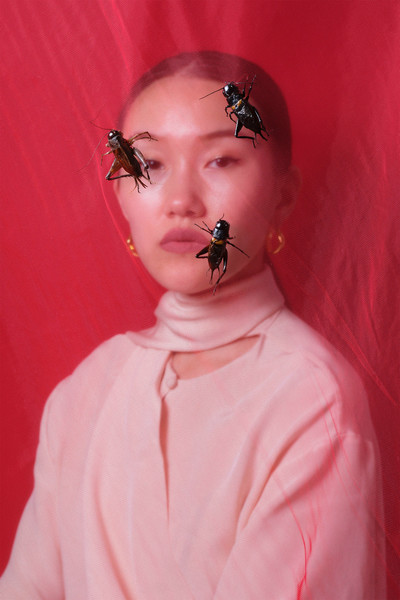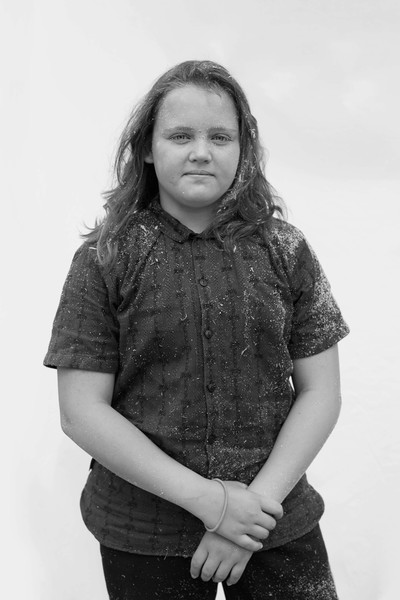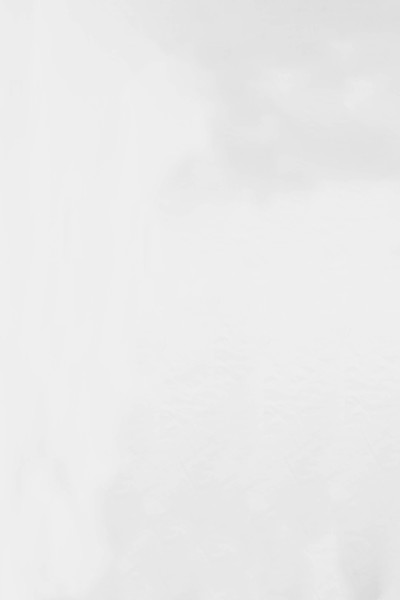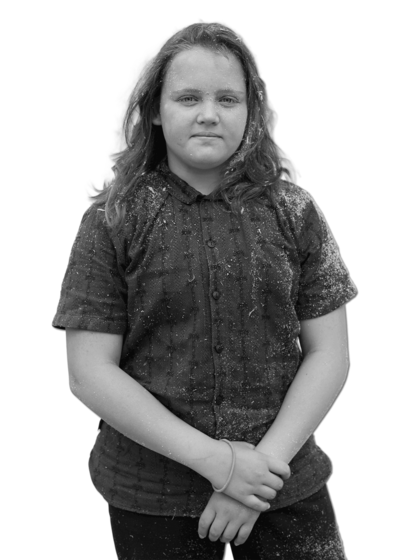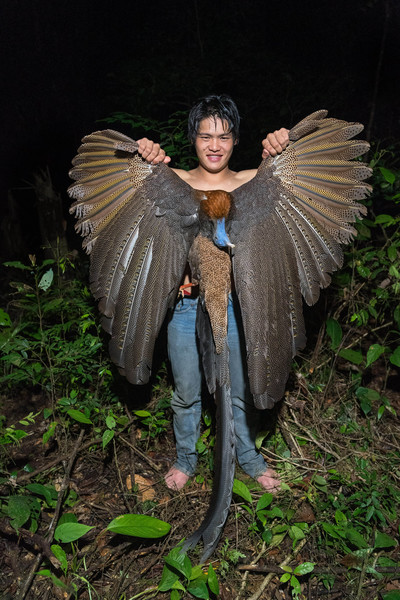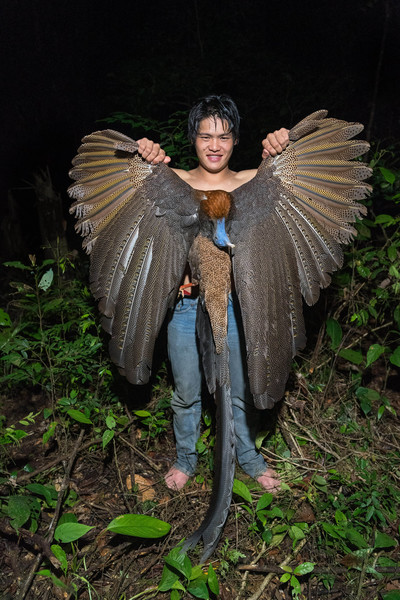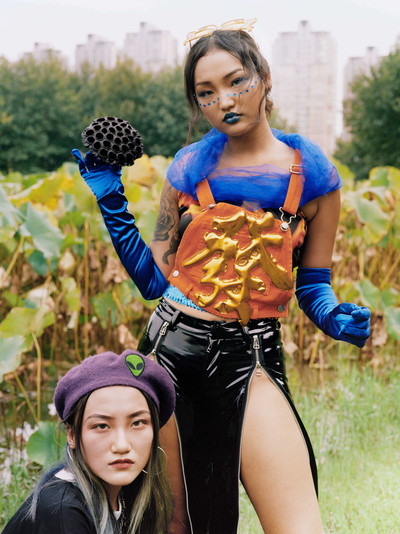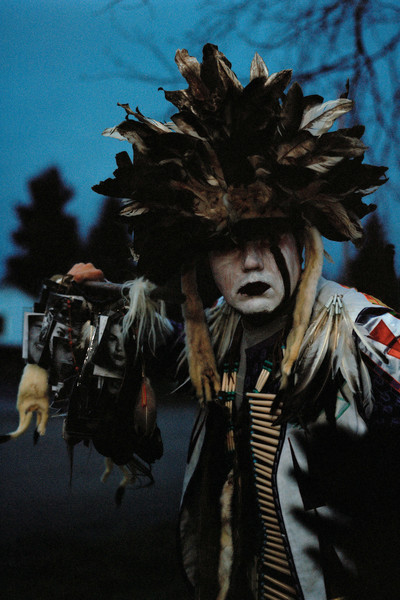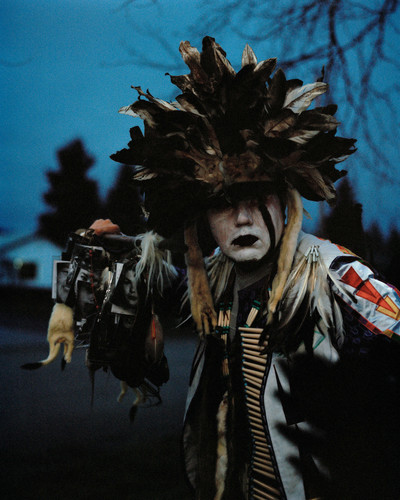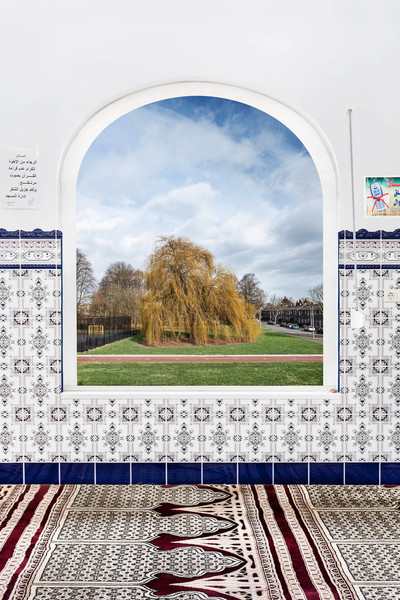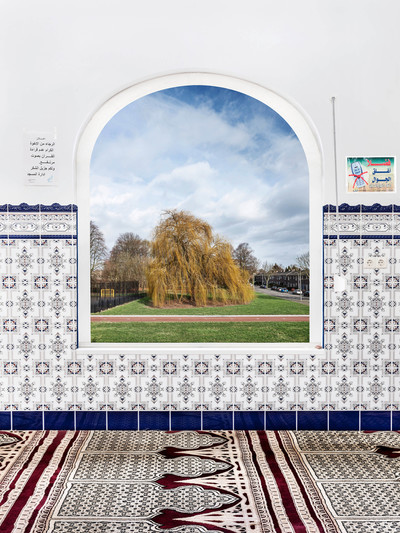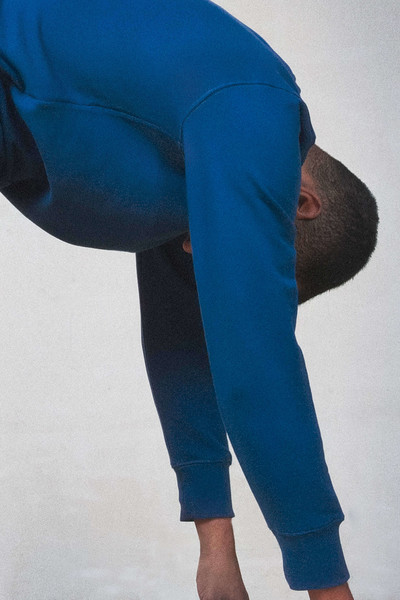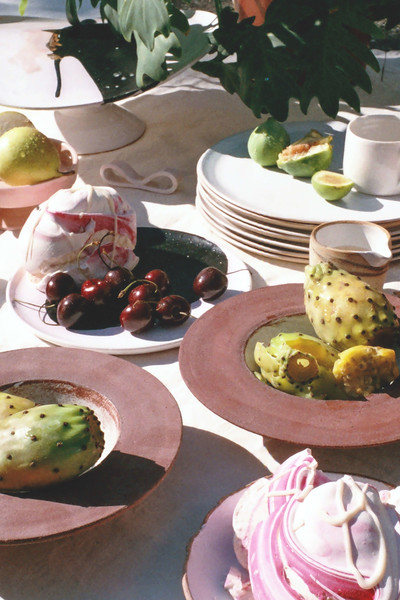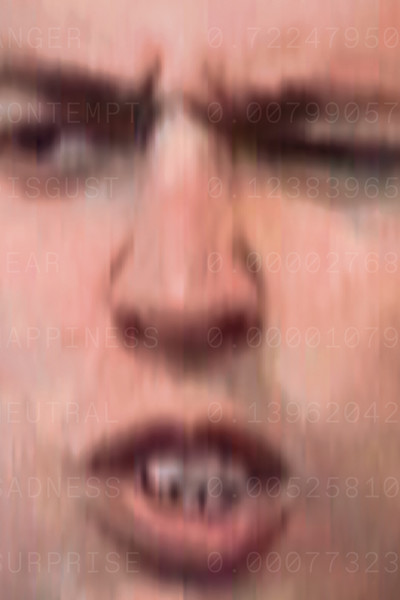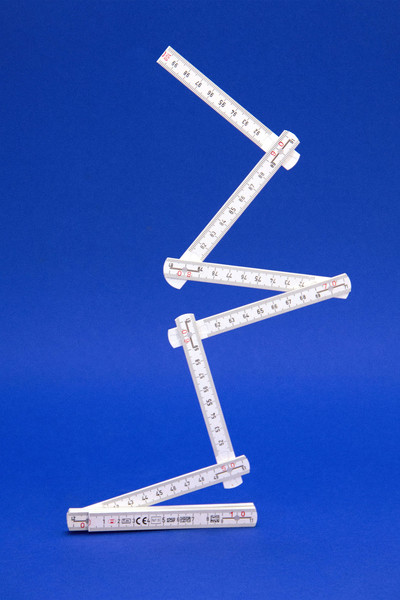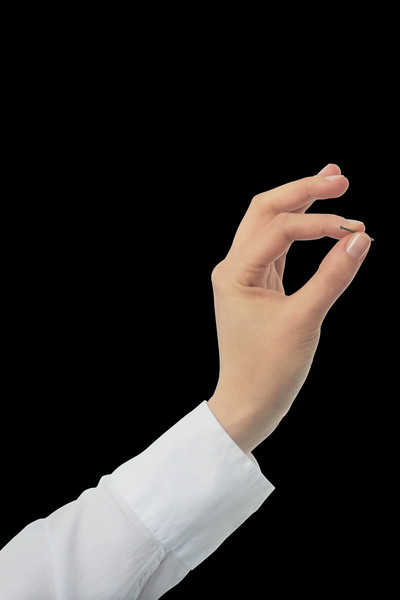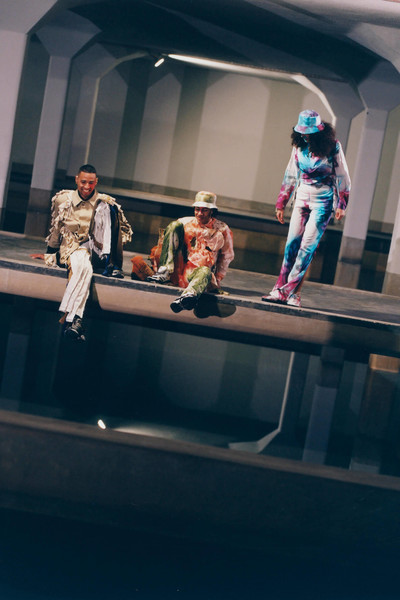is an intern at the Swiss Federal Office of Culture. He holds a Master of Arts degree in Contemporary History and French from the University of Fribourg, with a thesis on government-funded mural painting during the interwar period in Switzerland. Specialising in cultural and political history, he has also worked as a freelance journalist and as a junior researcher at the University of Fribourg.
Here and There We Are
Here and There We Are
By Mathieu Musy
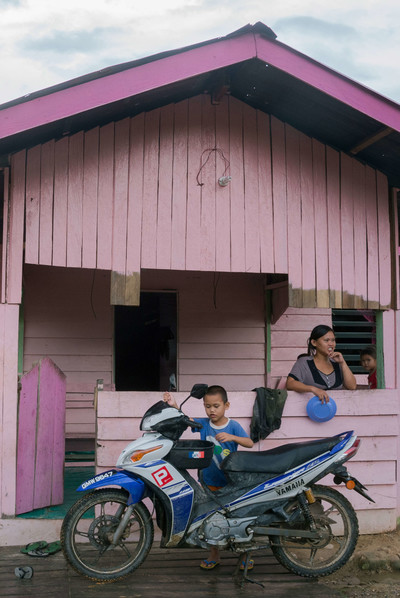
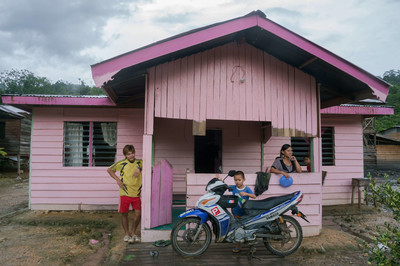
A cultural product representing a distant elsewhere is not so much a window on the world as a mirror reflecting our own gaze back at us. The selection for the Swiss Design Awards 2020 presents a large number of photographic projects, including several in the documentary category. The documentary photo, more than any other genre, allows us to question our relationship to others: a relationship defined by distance that is spatial but also social and even temporal, separating here from there. Yet we should not let ourselves be deceived by the seeming exoticism of these photos. They are always about us, and our perspective on the other.
“Here” is the place where I’m speaking now. It could be anywhere, as long as I am where it is. “Here” situates the origin of a gaze in space. And what I’m looking at, what is outside me, is “there”, where others are.
To think in terms of “here” and “there” is to reflect on one’s own place and the place left to others. In the field of cultural production, that idea is fundamental. Culture is a set of representations that a society produces. Whether they represent oneself or others, they always express a point of view. So a cultural product can represent someone other than oneself; yet, for all that, it remains the product of my gaze, directed from here. When it comes to cultural production, it’s always about us.
Among the works nominated for the Swiss Design Awards 2020, the photography selection explicitly deals with the relationship between here and there. A large number of documentary photographs were submitted to the jury: they are the quintessential medium for questioning our view of elsewhere and the way we behave towards others. Because once taken, these snapshots are not so much a window on the world as a mirror reflecting our own gaze back at us. Let’s have a look!
Ici c’est l’endroit où je parle maintenant. Cela pourrait être n’importe où, tant que je m’y trouve. Ici situe dans l’espace l’origine d’un regard. Et ce que je regarde, ce qui est extérieur à moi se trouve là-bas, peuplé par d’autres.
Penser ici et là-bas, c’est réfléchir à sa place et à celle laissée aux autres. Dans le domaine de la production culturelle, cette réflexion est fondamentale. La culture est un ensemble de représentations que produit une société. Qu’elles soient des représentations de soi ou des autres, elles expriment toujours un point de vue. Un produit culturel peut donc représenter d’autres que soi, il n’en reste pas moins le fruit du regard porté par moi depuis ici. En termes de production culturelle, c’est toujours de nous qu’il s’agit.
Parmi les œuvres nominées aux Swiss Design Awards 2020, la sélection photographique thématise explicitement le rapport entre ici et là-bas. De nombreux documentaires ont été soumis au jury: le genre par excellence pour questionner notre point de vue sur l’ailleurs et notre comportement envers l’autre. Parce qu’une fois exposés, ces clichés sont moins une fenêtre ouverte sur le monde qu’un miroir qui nous renvoie notre propre regard. Allons y jeter un œil!
“Exoticism is quite simply that mixture of seduction and ignorance, that renewal of sensation that comes about through strangeness.” — Tzvetan Todorov
«L’exotisme n’est rien d’autre que ce mélange de séduction et d’ignorance, ce renouvellement de la sensation grâce à l’étrangeté.» – Tzvetan Todorov
In documentary photography, the distance that separates here from there stimulates creativity. Unlike xenophobes, who reject anything foreign to themselves, what Tzvetan Todorov calls “exotes” are constantly searching for unknown horizons. As Todorov explains: “It is that very incomprehension that gives rise to charm: exoticism is quite simply that mixture of seduction and ignorance, that renewal of sensation that comes about through strangeness.”Tzvetan Todorov, Nous et les autres. La réflexion française sur la diversité humaine, Paris, Seuil, 1989.
En photographie documentaire, la distance qui sépare ici et là-bas stimule la créativité. A l’inverse des xénophobes, qui rejettent ce qui leur est étranger, les «exotes», comme les appelle Tzvetan Todorov, sont en quête d’horizons qui leur sont inconnus. Todorov explique: «C’est précisément de l’incompréhension que naît le charme: l’exotisme n’est rien d’autre que ce mélange de séduction et d’ignorance, ce renouvellement de la sensation grâce à l’étrangeté.» Tzvetan Todorov, Nous et les autres. La réflexion française sur la diversité humaine, Paris, Seuil, 1989.
To experience exoticism, one must go far away from here. And because that distance involves different landscapes, climates and cultures, it takes the senses by surprise. Laurence Kubski has illustrated that disorientation perfectly. After several months’ research in eastern China, she encountered an unlikely phenomenon: the breeding of crickets, for their song and for fighting. Unknown to most of us, this practice is a centuries-old tradition for others. Something surprising here, is a tradition there. This series of photos soberly titled “Crickets” is an uncanny journey for anyone unfamiliar with that culture.
Pour expérimenter l’exotisme, il faut partir loin d’ici. Parce que cette distance implique des différences de paysages, de climats et de cultures, elle surprend les sens. Un dépaysement que Laurence Kubski a su parfaitement mettre en scène. Après plusieurs mois de recherche à l’est de la Chine, elle est confrontée à un phénomène improbable: l’élevage de criquets, pour leur chant et pour les faire combattre. Inédite pour la plupart d’entre nous, cette pratique est une tradition millénaire pour d’autres. Une surprise ici, une tradition là-bas. Cette série de photos sobrement intitulée «Crickets» offre un voyage surnaturel pour qui est étranger ou étrangère à cette culture.
“I was driven by a curiosity for people who are interested in things that are far from what my interests are.” — Sabina Bösch
«J’ai été entraînée par une curiosité pour des personnes intéressées par des choses qui sont loin de mes propres intérêts.» – Sabina Bösch
Yet exoticism can also be found closer to home, something Sabina Bösch has understood. The Zurich-based photographer has created “Hoselupf”, a documentary series on women who tangle in the sawdust rings of Swiss wrestling — the arenas for a highly macho Swiss combat sport. On the face of it, it’s a local topic rather than an exotic one. But the two are not mutually exclusive. Sabina Bösch speaks of it with the words of an exote: “I was driven by a curiosity for people who are interested in things that are far from what my interests are.” The cultural gulf between the photographer and these female combatants is what motivates her preoccupation with them. And our expectations give meaning to that distance. Our surprise at the sight of these women wrestling in short pants derives from the fact that we conceive the sport they are engaged in as entirely masculine. Sabina Bösch’s photographs capture our gaze at the moment it is startled by the realisation of its own sexism.
Mais l’exotisme peut également se trouver ici. Sabina Bösch l’a compris. Photographe zurichoise, elle réalise «Hoselupf», documentaire sur des filles qui luttent à la culotte sur les ronds de sciure – les arènes de ce sport de combat suisse extrêmement machiste. Un thème plus local qu’exotique, semble-t-il. Mais l’un n’empêche pas l’autre. Sabina Bösch parle en exote: «J’ai été entraînée par une curiosité pour des personnes intéressées par des choses qui sont loin de mes propres intérêts.» Le gouffre culturel qui sépare les lutteuses de la photographe pousse cette dernière à s’y intéresser. Et nos attentes donnent sens à cet éloignement. Si nous sommes surpris∙es à la vue de ces filles qui luttent à la culotte, c’est bien parce que notre conception de ce sport est strictement masculine. En photographiant ces lutteuses, Sabina Bösch capture notre regard surpris de se découvrir sexiste.
The gaze and the expectations that we project onto others have their roots in our cultural heritage: a heritage made up of stories that have been handed down to us and that we perpetuate, stories that tell of us and tell of others, be it willingly or unwillingly. Among them, the myth of the golden age is one of the fundamentals of our culture. From the Sumerians to the present day, we have maintained a belief in a past era of civilisation during which we lived in harmony with nature. With European colonial expansion, exotic tales become very popular. At the same time, the myth of the golden age undergoes a change. Todorov calls it “primitivism”: the longing for an elsewhere, a place where a civilisation less evolved than ours — a past version of ourselves — supposedly persists in its natural state. Their earthly paradise is our paradise lost.
Le regard et les attentes que nous projetons sur les autres découlent de notre héritage culturel. Celui-ci est constitué d’histoires qui nous ont été transmises et que nous perpétuons: des histoires qui nous racontent et racontent les autres, de gré ou de force. Parmi elles, le mythe de l’âge d’or est un des fondamentaux de notre culture. Depuis les Sumer et jusqu’à nos jours, nous entretenons la croyance en un stade passé de notre civilisation où nous vivions en harmonie avec la nature. Avec l’expansion coloniale européenne, les récits exotiques deviennent très populaires. Corollairement, le mythe de l’âge d’or subit une mutation. Todorov l’appelle «primitivisme»: l’espoir d’un ailleurs où une civilisation moins évoluée que la nôtre – une version passée de nous-mêmes – serait encore dans son état naturel. Leur paradis terrestre est notre paradis perdu.
“My aim is to produce a book in which the Penan feel they are represented.” — Tomas Wüthrich
«Mon but: un livre avec lequel les Penan se sentent représenté∙e∙s» – Tomas Wüthrich
“Doomed Paradise” is the title that Tomas Wüthrich gives to his documentary series on the Penan tribe of Borneo. Given our familiarity with the golden age myth, we might have expected images of nomads living in harmony with nature. Peng Megut stands for them. He is making a heroic effort to conserve his endangered culture. But the photographer goes further, questioning our expectations of primitivism. The hunters’ catches offer up harsh, almost surprising images of violence. Worse still, some of the Penan have sold their forest habitat to buy a house or put their children through school. Tomas Wüthrich presents a series of images that is complex because it departs from our conventional narratives. Some will accord with the golden age myth; others will shatter it. They surprise us because they talk to us of ourselves. The photographer captures our astonishment at these tales of paradises we sought to impose on others, but that only ever existed in our myths.
«Doomed Paradise»: c’est le titre que donne Tomas Wüthrich à son documentaire sur la tribu des Penan de Bornéo. Parce que nous connaissons le mythe de l’âge d’or, nous pouvions nous attendre à des photos de nomades vivant en harmonie avec la nature. Peng Megut les représente. Il livre un combat héroïque pour la conservation de sa culture en péril. Mais le photographe va plus loin et questionne nos attentes de primitivisme. Les butins de chasse offrent des images dures, presque surprenantes de violence. Pire encore, certain∙e∙s Penan ont vendu leur forêt-habitat pour s’acheter une maison ou scolariser leurs enfants. Tomas Wüthrich offre une série complexe d’images, parce qu’elle s’écarte de nos narratifs habituels. Certaines satisfont le mythe de l’âge d’or, d’autres le déçoivent. Celles-là nous surprennent car elles nous parlent de nous. Et le photographe capture notre ébahissement face à ces récits de paradis que nous voulions imposer aux autres et qui n’ont jamais existé que dans nos mythes.
The representation of the other invariably harbours within it a form of violence. To represent another is to tell their story in their stead: to appropriate their story of themselves. When this appropriation turns into a monopoly, exoticism comes to resemble what Edward Said calls “Orientalism”.Edward Said, Orientalism, New York, Pantheon Books, 1978. A culture assumes the exclusive right to represent another culture as its opposite — rather like the West, which exists only because it invented the East. How, then, can we represent others without dispossessing them of their history?
“Know yourself”, is Said’s reply. And in this process, the role of documentary photography could be crucial. By illustrating our gaze, it exposes our expectations and reveals our cultural heritage. These snapshots of others help us to know ourselves better. And that act of introspection allows initiatives to emerge that aim to re-qualify the place of others in our stories. Hence: “My aim is to produce a book in which the Penan feel they are represented”, explains Tomas Wüthrich on the publication of “Doomed Paradise”. The book is addressed to the Penan. It is printed on paper suited to tropical climates and incorporates their myths, in their language.
Our brief journey takes us far away from here to contemplate other worlds that are, on the face of it, different. Closer to nature, they gravitate around crickets or a sawdust ring. And yet for all their exoticism, these worlds testify to ourselves, because we represent them in accordance with our codes and on the basis of our history. Here, as there, it’s always about us.
La représentation de l’autre porte toujours en elle une forme de violence. Représenter l’autre, c’est raconter son histoire à sa place, c’est-à-dire s’approprier son récit de soi. Lorsque cette appropriation devient un monopole, l’exotisme s’apparente à ce qu’Edward Said appelle «orientalisme».Edward Said, L’Orientalisme, Paris, Seuil, 1980. Une culture assume la représentation exclusive d’une autre culture comme son contraire – à l’image de l’occident, qui n’existe que parce qu’il a inventé l’orient. Alors comment représenter les autres sans les déposséder de leur histoire?
«Connais-toi toi-même», répond Said. Et dans ce processus, le rôle de la photographie documentaire pourrait être crucial. En illustrant notre regard, elle expose nos attentes et révèle notre héritage culturel. Ces clichés d’autres aident à mieux nous connaitre. Et cet effort d’introspection permet l’émergence d’initiatives qui visent à requalifier la place des autres dans nos récits. «Mon but: un livre avec lequel les Penan se sentent représenté∙e∙s», avance ainsi Tomas Wüthrich à propos de la publication de «Doomed Paradise». Le livre s’adresse aux Penan. Il est imprimé sur un papier adapté aux climats tropicaux et intègre leurs mythes, dans leur langue.
Le temps d’un voyage, nous partons loin d’ici afin de contempler d’autres mondes, à priori différents. Plus proches de la nature, ils gravitent autour de criquets ou d’un rond de sciure. Mais aussi exotiques soient-ils, ces mondes témoignent de nous, car nous les représentons selon nos codes et d’après notre histoire. Ici comme là-bas, c’est toujours de nous qu’il s’agit.
est stagiaire à l’Office fédéral de la culture. Il est diplômé d’un Master of Arts en histoire contemporaine et français à l’Université de Fribourg, avec un mémoire sur les peintures murales suisses. Spécialisé dans l’histoire culturelle et politique, il a également travaillé comme journaliste pigiste et comme chercheur junior à l’Université de Fribourg.
